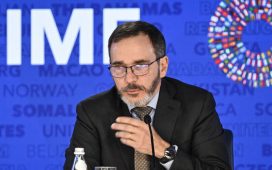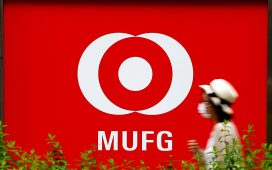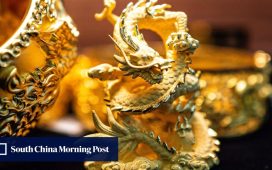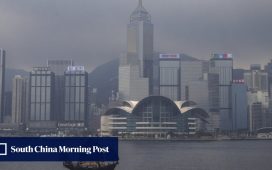DAMMAM: More than 100 companies from 35 countries descended on the Dhahran Expo for an under-the-sea experience during the International Conference and Exhibition of Algae from June 4-6.
The event, organized in conjunction with the International Fisheries Exhibition — known as SIMEC — played host to 16 workshops in a dedicated interactive space where seafood was offered to visitors, videos were on display, and experts were on hand to discuss everything related to algae and fish.
The exhibition was held under the patronage of the Eastern Province Gov. Prince Saud bin Nayef bin Abdul Aziz, the Ministry of Environment Water and Agriculture, and the National Livestock and Fisheries Development Program.
Abdul Majeed bin Saad Alshehri, chairman of the conference and SIMEC, said: “In this major global event, we proudly bring together global expertise and international expertise that will further advance food processing industries, develop human capacities, localize cutting-edge algae, and aquaculture technologies … I am fully confident that (IACE will) come up with tangible and actionable recommendations that will transform the algae and fisheries industries.”
The hybrid modality conference was presented in both English and Arabic — with headsets providing simultaneous translations for those requiring it.
The aim of the three-day gathering was to target businesses from the algae sector as well as to increase awareness regarding the potential for algae cultivation.
Another goal was to attract investors, inform government representatives of updates in the sector and engage stakeholders from the algae and aquaculture production chain.
It was also a chance for the global community to exchange information and form potential collaborations among academic researchers working on algae biotechnology.
The main conference sponsor, NEOM, had several interactive spaces within the exhibition and hosted several workshops.
There were other forums led by experts from around the world, including local Saudi universities and companies.
The Dhahran Expo space was also divided into booths with informative experts passing out brochures and samples of fresh seafood.
One such exhibitor was Julien Ropert, export manager from Le Gouessant in France.
He traveled to Saudi Arabia for the first time in order to participate at the exhibition and to speak on a panel.
With over 30 years of experience in fish feed manufacturing, Le Gouessant brought its expertise in sustainable fish farming nutrition to the space.
Having worked for Le Gouessant since 2016, Ropert is the technical sales manager aquaculture based in France but in charge of Africa and the US.
Saudi Arabia is a new target as they hope to expand into the Middle East.
“I came to this exhibition to see the Saudi people because I saw videos on the internet on many occasions and it’s a huge country with huge capacity and the government is increasing the sector of the efficiency of fish farming,” he told Arab News.
His hope is that he will be able to secure some partnerships within Saudi Arabia in the imminent future in relation to fish farming.
Saleh Bukhamseen, the award-winning underwater cinematographer whose short film “The Whaler” won the Science Award at the 2022 Nice International Film Festival, spoke to Arab News about the importance of algae in the region.
“We are here at the exhibition to show the people how important algae is and and how it’s important for the whole ecosystem,” Bukhamseen told Arab News.
He emphasized how everything within nature is connected. The green turtle is a vital creature in the controlling of algae since it serves like a mini-cleaner in the water.
The turtle nibbles on the algae to prevent it from taking over and completely covering and blooming over the coral reef — which is home to a huge population of fish. Coral reefs provide around 25 percent of the fish consumed from the whole ocean and sea. Algae serves as an important source of food for those sea turtles.
The exhibition held in Dammam was significant because the nearby waters produce larger fish meant to be eaten. In the Red Sea, on the opposite coast, those fish are more colorful but are “tiny” and thus not suitable for mass consumption.
The waters in Dammam are more rocky and shallow and as a result, allow for sea creatures to thrive. The Red Sea is deeper and better for diving.
The next SIMEC AquaFish exhibition will be held at the Riyadh International Convention and Exhibition Center in early 2024.















